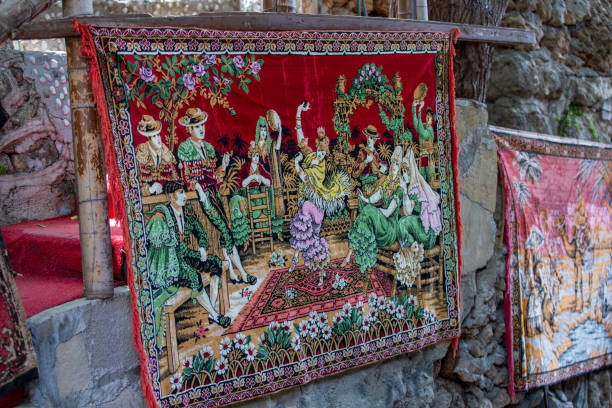Introduction: Defining Korpenpelloz
Korpenpelloz represents a confluence of ritual, art, and community. While the term may appear obscure, it encapsulates a rich cultural narrative woven through centuries. Rooted in ancient traditions—possibly European ritualistic origins—it grew into an enigma blending symbolic expression with communal identity ventsmagazine.co.uk+92amagazine.com+9think7figures.com+9. At its heart lies a dynamic interplay between preservation and evolution.
1. Origins & Historical Roots
1.1 Ancient Origins
Scholars suggest Korpenpelloz may derive from ancient European customs, originally serving as a ritual symbol—a representation of unity and shared belief among communities .
1.2 Evolution Over Time
Over centuries, the concept migrated beyond ritual. By the early 20th century, Korpenpelloz had evolved into an artistic movement—a reaction to classical forms, seeking expression through modern creativity while maintaining historical depth elamatters.com+9cedarmi.com+9thebigger.com+9.
2. Korpenpelloz’s Cultural Significance
2.1 Symbolism & Ritual
Traditionally, Korpenpelloz features symbolic patterns and gestures used in ceremonies, emphasizing community cohesion and collective memory . These rituals strengthened shared identity and transmitted cultural values.
2.2 Oral Tradition & Storytelling
Storytelling has been a key method of preserving Korpenpelloz’s heritage. Oral narratives and local dialects carried its symbolism across generations, safeguarding language and communal values thegloworm.com+9think7figures.com+9swissscope.com+9.
3. Festivals & Celebrations
3.1 Harvest Festival
A pivotal celebration, the Harvest Festival, honors agricultural cycles. It features folk music, dances, and cuisine, alongside artisan markets that spotlight local handicraft techniques .
3.2 Festival of Lights
Certain regions celebrate Korpenpelloz through a “Festival of Lights,” where lanterns symbolize renewal and hope. Events include performances and parades that reinforce cultural solidarity .
These gatherings serve as cultural anchors—preserving traditions while promoting tourism and economic vitality.
4. Regional Variations & Interpretations
4.1 Dialects & Local Nuances
Different regions interpret Korpenpelloz uniquely, reflected in dialects, local practices, and symbolic motifs. Each community weaves its version into storytelling, music, and crafts think7figures.com.
4.2 Folklore vs Contemporary Adaptation
Some see Korpenpelloz as folklore, others interpret it dynamically through art and activism. This multiplicity ensures it remains relevant while stirring debates about authenticity and cultural ownership ventsmagazine.co.uk+92amagazine.com+9swissscope.com+9.
5. Artistic & Creative Expressions
5.1 Visual Art & Design
Artists incorporate Korpenpelloz motifs—geometric and symbolic—into paintings, installations, and textiles, blending tradition with modern aesthetic sensibilities .
5.2 Cross-Disciplinary Fusion
Musicians, dancers, and filmmakers draw on Korpenpelloz’s themes, integrating them into music, performance, and storytelling. This cross-pollination redefines the concept for contemporary culture 2amagazine.com.
5.3 Educational & Digital Revival
Modern technology—social media, workshops, documentaries—revitalizes Korpenpelloz. Schools and cultural institutions promote it through curricula and community programs, ensuring younger generations connect with their heritage swissscope.com.
6. Societal Impact & Community Identity
6.1 Fostering Belonging
Korpenpelloz fosters a sense of unity by providing shared symbols and rituals that connect individuals across time. It often brings diasporic communities back to their roots thegloworm.com+1ventsmagazine.co.uk+1.
6.2 Preserving Language
Local expressions tied to Korpenpelloz preserve dialects and idioms, helping counteract the erasure of local languages .
7. Sustainability & Environmental Ethos
Korpenpelloz emphasizes environmental respect, visible in eco-friendly festival practices and artisan crafts using sustainable materials. It often revives traditional ecological knowledge—harvesting, land stewardship, agricultural harmony thegloworm.com+1ventsmagazine.co.uk+1.
8. Modern Revivals & Controversies
8.1 Digital Renaissance
Online communities and creative platforms are reinterpreting Korpenpelloz through art memes, virtual workshops, and community-driven documentation .
8.2 Concerns of Authenticity
Some criticize modern adaptations as diluting Korpenpelloz’s original depth, pointing to concerns over commercialization and appropriation elamatters.com+92amagazine.com+9thebigger.com+9.
8.3 Ownership & Representation
Debates have arisen around who holds “custodianship.” Different cultural groups assert unique interpretations, sparking discussions about cultural representation and stewardship 2amagazine.com.
9. Preserving the Legacy
9.1 Community-Led Initiatives
Local heritage programs—storytelling nights, craft workshops, traditions—actively keep Korpenpelloz alive. They restore public awareness and intergenerational transmission .
9.2 Digital Archiving
Podcasts, social platforms, and oral history projects help archive Korpenpelloz’s narratives and imagery, making them accessible globally .
10. The Global Potential of Korpenpelloz
10.1 Cultural Exchange & Tourism
Korpenpelloz’s uniqueness attracts travelers seeking authentic experiences—festivals, local crafts, heritage tours—driving economic and intercultural exchange eman-network.com+5think7figures.com+5swissscope.com+5.
10.2 Artistic & Educational Collaborations
Artists and educators are integrating Korpenpelloz into global projects, expanding its resonance while preserving respectful authenticity 2amagazine.com.
Conclusion
Korpenpelloz is more than folklore—it’s a living cultural tapestry, rooted in ancient rituals yet vivified through modern art, sustainability, and community engagement. It unites communities, revitalizes heritage, and sparks global interest. Yet, its vitality depends on respectful preservation, meaningful community involvement, and careful adaptation—balancing integrity with innovation. As Korpenpelloz evolves, it remains a testament to the power of cultural heritage: to inspire, unify, and adapt across time.
